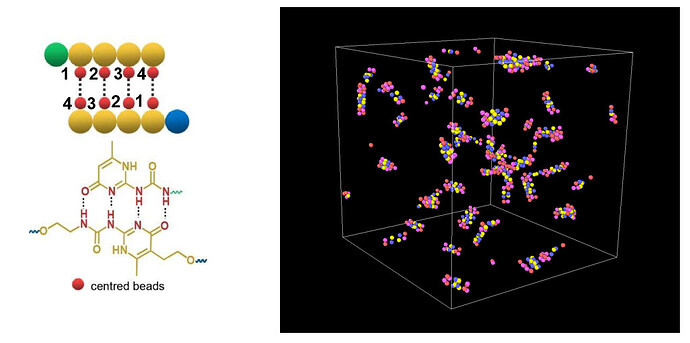Dear all,
I am simulating the interaction of the quadruple hydrogen bond, and I used the bead-spring FENE model with LJ units. The epsilon of the centred beads is set 10(1-4, 2-3, see figure left). And I use neigh_modify exclude molecule/intra to turn off the interaction in one molecule. The beads will easily aggregate in this situation(see figure right). But the formation of hydrogen bonds is saturated, meaning that a bead can only interact with one bead. Are there any suggestions about this? How to prevent the centred beads’ aggregation and only interact with one bead to form the quadruple hydrogen bond?
The configuration you see is what should be expected from a bunch of molecules in gas phase: depending on the kinetic energy, some will stick and some will remain in the gas phase.
Probably you need a solvent to allow the molecule to find the configuration you are after, which seems to be the one with the lowest energy.
All of the above is based on the assumption that your model is sophisticated enough to capture the intermolecular interactions of your molecules.
What you are describing is a general limitation of using spherical interactions. What you want it a directional interaction and that requires a model with directional forces.
What you are trying to do looks similar to what is done in the CG-DNA package 6.2. Package details — LAMMPS documentation
Perhaps you can get some inspiration from the publications related to it and describing its implementation and perhaps you can utilize or adapt the associated styles for your purpose.
I don’t expect that there will be a simple “do this, not that” kind of solution.
Thank you for your suggestions!
Thank you for your suggestions! The author of the paper describing the interaction between centred bead (figure left) told me that they do not use LAMMPS to simulate this configuration rather than writing a judgements in their MD programs. In this case, I simplified my model using bond/react to simulate.
